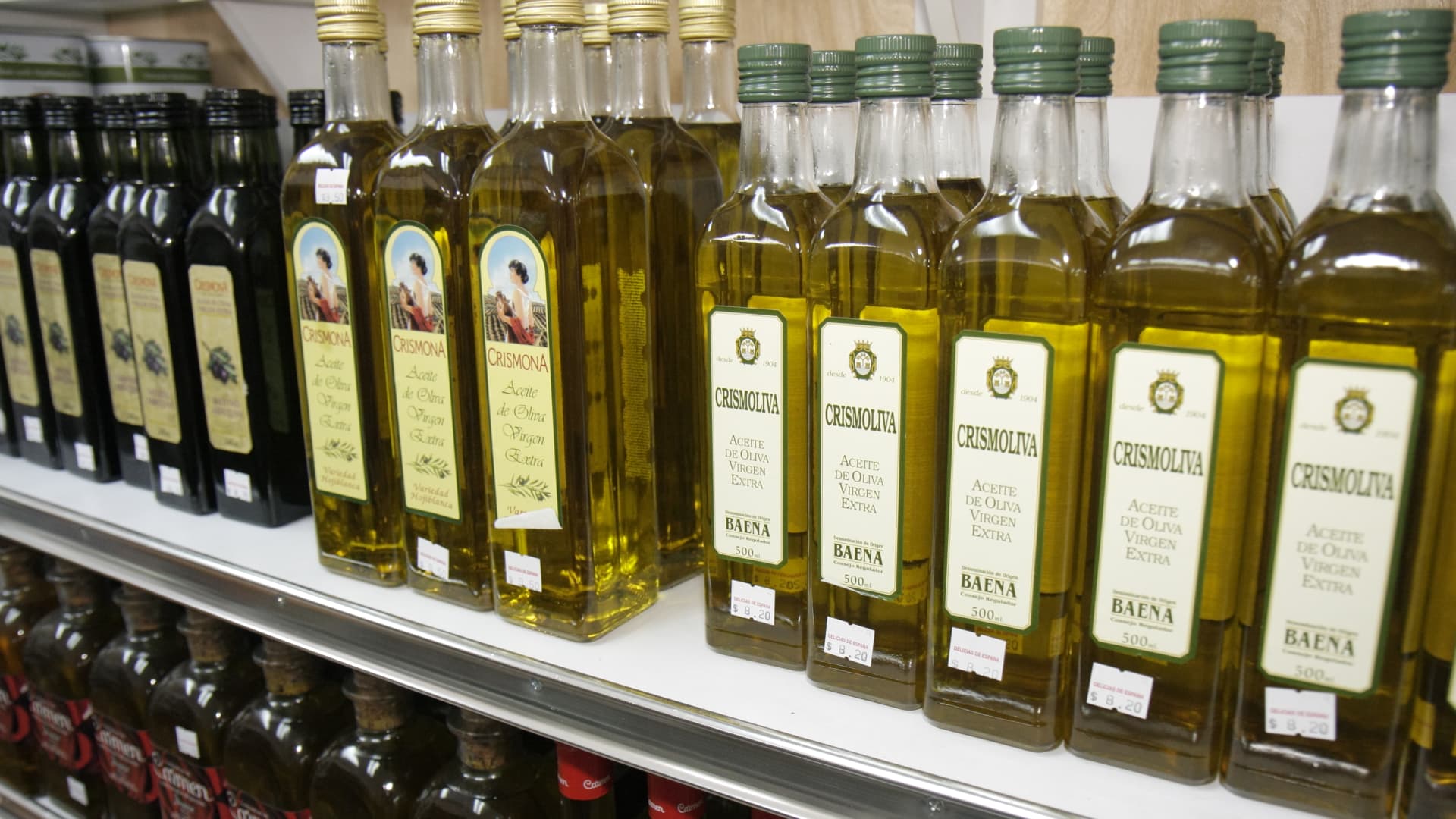Spain’s drought has pushed olive oil prices to a 26-year high — and they’re expected to stick

“The issues contributing to prices trending at near all-time highs are largely poor weather and a severely dry growing period for much of the Mediterranean, but most importantly in Spain, which is a major producer and exporter of olive oil,” said Mintec’s oilseeds and vegetable Oils analyst, Kyle Holland.
Jeff Greenberg | Universal Images Group | Getty Images
Olive oil prices have hit record levels, thanks to a prolonged drought in top producer Spain — and the elevated prices are expected to stay for some time.
When renowned Spanish-American chef José Andrés tweeted that eggs should be fried in olive oil a finger deep, one user commented: “Olive oil can be expensive at a finger deep. What’s an alternative for those of us on a budget?”
“Aldi olive oil spread used to 99p. It’s now £1.29 Plus lots of the basic ranges have disappeared. Even Aldi is expensive now!” said another Twitter user, based in England.
According to data from the International Monetary Fund, global olive oil prices have hit $5,989.8 per metric ton, marking a 26-year high.
And the high prices could stay “for some time to come,” said Mintec’s oilseeds and vegetable oils analyst, Kyle Holland.
‘Exceedingly poor’ weather conditions
Bad weather in Spain, in particular the prolonged dry spell, is the main reason behind soaring prices.
“The issues contributing to prices trending at near all-time highs are largely poor weather and a severely dry growing period for much of the Mediterranean, but most importantly in Spain, which is a major producer and exporter of olive oil,” Holland said.
As a result of “exceedingly poor” weather conditions, he said, the recent October to February olive harvest produced a yield 50% less than the usual output, tightening global supply and pushing prices upward.
“The exceedingly poor weather conditions meant that … Spain produced an olive oil crop of around 630,000 metric tonnes, down from the usual 1.4 to 1.5 million metric tonnes harvest,” he said.
The outbreak of war in Ukraine, which created a global shortage in sunflower oil, pushed up the demand for olive oil even more.
David Valmorbida
resident of the Australian Olive Oil Association
Olive trees grow in warm and dry climates, and the optimal temperature ranges from 60 to 80 degrees F.
Spain had a bout of “very dry” weather in March, recording just 36% of the average monthly rainfall, according to the country’s Ministry of Ecological Transition. The country experienced 36 straight months of below-average rainfall.
And if the weather doesn’t improve, the upcoming harvest could face an even worse yield.
“There could be a similar or even lower crop than the one produced in the season prior, according to market players, who are also saying that prices could be at the current levels for some time to come,” Holland said.
“It appears the ongoing drought in Europe, most importantly in the largest olive oil-producing region of Spain, has caused a global supply shortage of olive oil,” David Valmorbida, president of the Australian Olive Oil Association, told CNBC.
Demand pressures
Demand pressures are putting more strain on already challenged supply chains.
The demand for olive oil has been strong in recent years — prices have been rising since 2020 because consumers were eating and cooking at home more often during and after the Covid-19 pandemic, Valmorbida said.
On top of that, the shortage of sunflower oil after Russia’s invasion of Ukraine drove up prices.
“The outbreak of war in Ukraine, which created a global shortage in sunflower oil, pushed up the demand for olive oil even more,” he added.
Workers shaking olive trees during harvest on Nov. 24, 2022, in Jaen, Spain. “Consumers have already started to reduce consumption of olive oil substantially, firstly by being less generous in usage, but secondly by switching to vegetable or seed oils, or various oil blends,” one analyst said.
Carlos Gil | Getty Images News | Getty Images
Changing consumer habits could ease some of the pressure.
“Consumers have already started to reduce consumption of olive oil substantially, firstly by being less generous in usage, but secondly by switching to vegetable or seed oils, or various oil blends,” Valmorbida said.
Nevertheless, he maintained that a base demand for olive oil as a healthy and natural product will “remain at almost any price.”
“So without an increase in rainfall, we could continue to see historically elevated prices at or above 5 euro per kg through into the 2023/24 harvest year.”









